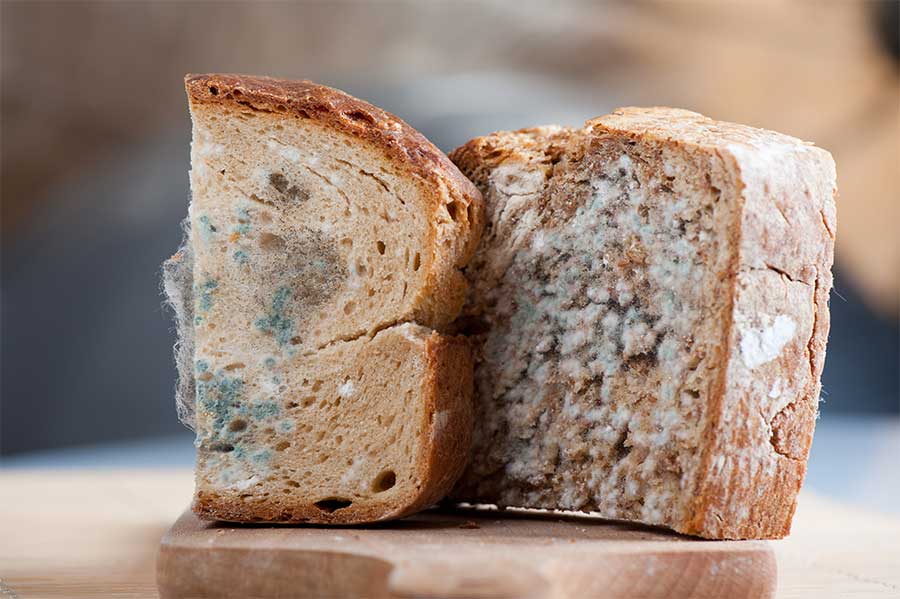41 food labels with additives
Food and drink additives you should avoid. | CHOICE "Intolerances to food additives can occur in a small proportion of the population," FSANZ says. "Food labels can help people who are sensitive to some food additives to avoid them. We also keep an eye on emerging science so if anything new comes up that causes us to be concerned about an additive we will review those levels to make sure they ... Food labels: What are additives and E-numbers? - AngeNoy.com Additives can be natural or artificial in origin, and can be listed with either an e-number or a name, such as Sweetener (Aspartame), or Sweetener (E951). What are E-numbers? E-numbers are reference code numbers given to different chemicals that have undergone safety tests and been approved for use as food additives throughout the European Union.
Global Lecithin & Phospholipids Markets Report 2022-2027: … 03/05/2022 · Global Lecithin & Phospholipids Markets Report 2022-2027: Growing Demand for Natural Food Additives and Increasing Consumer Awareness About Clean-Label Products Propelling the Market ...

Food labels with additives
Don't Be Fooled by Food Labels - WebMD A food can say "made with whole grain" or "rich in whole grain" even if whole grains aren't one of the main ingredients. It could have lots of refined grains, too, and just a sprinkling of whole ... Avoid these 6 harmful food additives | The CNM Health ... Here's how to look out for food additives when reading a label: Strange sounding ingredients. If an ingredient has an obscure name or uses acronyms such as BHT (Butylated hydroxytoluene), you can guarantee it is some kind of additive. E-numbers are additives. Manufacturers either use the name of the additive or the numerical ID to display the ... › food-additivesFood additives - British Nutrition Foundation Food labels give information about most additives present in the ingredients list, so that consumers can make informed choices. For more information on additives currently allowed in foods and their E numbers see the Food Standards Agency’s website .
Food labels with additives. Food additive labelling Most food additives must be listed by their class name followed by the name of the food additive or the food additive number, for example, Colour (Caramel I) or Colour (150a). Enzymes and most flavourings (or flavour) do not need to be named or identified by a food additive number and can be labelled by their class name only. Understanding Food Labels - Food Ingredient Facts Food labels are required to list all ingredients contained in the food in descending order based on the amount found in the final product. Most food additives are therefore found toward the end of the ingredient list. This indicates they are used in very small amounts in the food, generally less than two percent of the product. Food Additive Status List | FDA Additives included are those specified in the regulations promulgated under the FD&C Act, under Sections 401 (Food Standards), and 409 (Food Additives). The Food Additives Status List includes... Overview of Food Ingredients, Additives & Colors | FDA On a product label, the ingredients are listed in order of predominance, with the ingredients used in the greatest amount first, followed in descending order by those in smaller amounts. The label...
7 Additives in our processed food that are banned outside ... EWG includes the entire group of FD&C colors on its Dirty Dozen list of food additives to avoid. Regulations: Yellow 5, Yellow 6, and Red 40 are authorized for use in the European Union member states, but companies must include a warning on food labels that reads "may have an adverse effect on activity and attention in children." Conclusion Food Additives Examples, Types & List | What are Food ... Food additives, such as ascorbic acid and other preservatives, are added to fresh foods to prevent the growth of harmful bacteria and mold. Wax is a food additive used as a covering over the skin... Food additives - World Health Organization Substances that are added to food to maintain or improve the safety, freshness, taste, texture, or appearance of food are known as food additives. Some food additives have been in use for centuries for preservation - such as salt (in meats such as bacon or dried fish), sugar (in marmalade), or sulfur dioxide (in wine). Food Label Translation: What Are The Additives BHA & BHT ... Lately, reading food labels can make you feel like you need a short refresher course in chemistry. With all these unknown additives and strange sounding names, it can be quite intimidating if you're trying to eat a decent diet.
Food Labels | Nutrition.gov Food and Drug Administration (FDA) regulates the safety of food for humans and animals, including foods produced from genetically engineered (GE) plants, sometimes referred to as "genetically modified organisms" (GMOs). Find out more about the safety of GE plants, and how they are regulated here. Food Additives and Compounds - Nutrition.gov Consumer Info About Additives & Ingredients. HHS, Food and Drug Administration, Center for Food Safety and Applied Nutrition. Find information from the Food and Drug Administration ( FDA) on benzene, color additives, fat substitutes, food irradiation, preservatives, sweeteners, sulfites, and more. Food Additives: Definition, Uses, Examples, Types ... Types of Food Additives. The different types of food additives used in food are: Flavors and sweeteners. Antioxidants. Preservatives. Food colors (dyes) Fat emulsifiers and stabilizing agent. Flour improvers antistaling agents and bleaches. Nutritional supplements such as vitamins, minerals, and amino acids. › safety-hygiene › food-additivesFood additives | Food Standards Agency Oct 14, 2019 · Different types of food additives. Food additives are grouped by what they do. The additives that you are most likely to come across on food labels are: antioxidants – these stop food becoming rancid or changing colour by reducing the chance of fats combining with oxygen; colours
Read Your Labels: The "Top Ten" Additives to Avoid: A Recap These "excitoxins" can be found in soups, broth, flavoring additives, chips, dips, soup mixes, ramen noodles, frozen meals, snack mixes, canned fish, and a wide variety of other dishes - including "natural," "vegetarian," and organic ones. Why you should avoid them:
50 Jawdroppingly Toxic Food Ingredients & Artificial Additives to … Not required to be listed on food labels. Propyl gallate: Found in meats, popcorn, soup mixes and frozen dinners. Shown to cause cancer in rats. Banned in some countries. Deemed safe by FDA. Olestra: Fat-like substance that is unabsorbed by the body. Used in place of natural fats in some snack foods. Can cause digestive problems, and also not healthy for the heart. Carrageenan: …
Food labels & nutritional information - Raising Children Network 23/09/2020 · Food labels and nutritional information panels: what and where they are. Food labels are included on all food products, except for very small packets and fresh foods like fruit, vegetables and local bakery or organic products. Food labels: tell you what ingredients and/or additives are in the food
Additives in food products - EU labelling rules - Your Europe In an ingredient list, most food additives and food enzymes must be preceded by the name of the category to which they belong (examples: antioxidant, emulsifier, preservative). List of all additives - annex 2 part B of the EU regulation on food additives Classes of food additives - annex 1 of the EU regulation on food additives
Portland Pet Food Co. releases recyclable shelf-stable packaging | 2017-06-23 | Packaging Strategies
› food › food-ingredients-packagingFood Ingredients & Packaging | FDA Apr 21, 2021 · Overview of Food Ingredients, Additives & Colors; Determining the Regulatory Status of a Food Ingredient; Packaging & Food Contact Substances. Access program information, inventories, and ...
Food Labels Lab.pdf - FOOD LABELS and ADDITIVES Key ... FOOD LABELS and ADDITIVES Key Questions 1. What does the Nutrition Facts Panel tell you about the food in the package? (cts-label) Since the Nutrition Facts Panel includes information about the serving size, carbs, protein, etc.This information lets you know whether a serving has an abundance of nutrients or not.
Food Label Misconceptions - Food Ingredient Facts The truth of the matter is that food labels, including those with long lists of scientific names, are clean and safe themselves; and to get rid of these naturally-occurring, supportive ingredients and additives only serves to reduce taste, convenience, shelf-life, and overall food efficiency.
Food additives - Food label requirements - Canadian Food ... Food additive preparations must include the following information on their labels: either a quantitative statement of the amount of each additive present, or directions for use which, if followed, will produce a food that does not contain additives above the maximum levels prescribed in the lists of permitted food additives





Post a Comment for "41 food labels with additives"